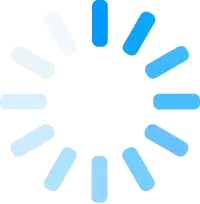Determine linear and angular velocities by graphical velocity analysis for the given position q2 = 60° of the mechanism, as shown above.
engineering
Description
1.
Answer to question 1: Graphical
Position Analysis
Determine all possible positions of links and joints by graphical
position analysis. Draw to scale all positions of joints for sixteen subsequent
positions of link 2 and determine the limits of motion where appropriate.
Identify and outline the paths of each moving
joint.
[Write your answer here. Show detailed drawing and calculations with
proper labelling and scale information]
Draw
to scale all position of joints for 16 subsequent positions of link 2 and
determine the path of each moving points. [See Figure below for an example]

Figure 3: Position diagram showing 16 points including
path of each moving parts (Scale: 1 mm = ?? m)

Figure 4: Position diagram for path of each moving
parts (Scale: 1 mm = ?? m)
2.
Answer to question 2: Graphical
Velocity Analysis
Determine linear and angular velocities by graphical velocity
analysis for the given position q2 = 60° of the mechanism, as shown above. Draw to scale the velocity vector
diagram encompassing all linear velocities to scale and present the results in
a tabular form.
[Write your answer here. Show detailed
drawing and calculations with proper labelling and scale information]
Show the calculations of VA, ω2,
ω3, ω4, ω5 and draw to scale
the velocity vector diagram of the mechanism at θ2 = 60°.
[See Figure below for an example]

Figure
5: Velocity diagram (Scale: 1 mm = ?? m/s)
Tabulate
the values from Graphical Velocity Method in Table 4.
Table 4: Results from
graphical velocity analysis
|
Linear velocity (m/s) |
VA |
= |
|
|
VB |
= |
|
|
|
VC |
= |
|
|
|
VD |
= |
|
|
|
Angular velocity (rad/s) |
ω2 |
= |
|
|
ω3 |
= |
|
|
|
ω4 |
= |
|
|
|
ω5 |
= |
|
3.
Answer to question 3: Graphical
Acceleration Analysis
Determine all linear and angular accelerations by graphical
acceleration analysis for the given position q2 = 60° of the mechanism. Draw to scale the
acceleration vector diagram encompassing all linear accelerations to scale and
present the results in tabular form.
[Write your answer here. Show detailed
drawing and calculations with proper labelling and scale information]
Show
the calculations of AA, α2, α3, α4,
α5 and draw to scale the velocity vector diagram of
the mechanism at θ2 = 60°. [See
Figure below for an example]

Figure
6: Acceleration diagram (Scale: 1 cm = ?? m/s2)
Tabulate
the values from Graphical Acceleration Method in Table 5.
Table 5: Results from
graphical acceleration analysis
|
Linear acceleration (m/s2) |
AA |
= |
|
|
AB |
= |
|
|
|
AC |
= |
|
|
|
AD |
= |
|
|
|
Angular acceleration (rad/s2) |
α2 |
= |
|
|
α 3 |
= |
|
|
|
α 4 |
= |
|
|
|
α 5 |
= |
|
4.
Answer to question 4: Instantaneous
Centres of Velocity
Determine all instantaneous centres of velocity for the given
mechanism using Kennedy’s rule, and velocities of joints A, B, C and D using
identified instantaneous centres. Draw
all instantaneous centres and velocities to scale on a separate diagram of the mechanism.
[Write your answer here. Show detailed
drawing and calculations with proper labelling and scale information]
Find
out all the Instantaneous centres of zero velocity using Kennedys triangle
theorem and draw them all. Also draw the diagram to scale using Instantaneous
Centre (IC) method at θ2 = 60°. [See
Figure below for an example]






